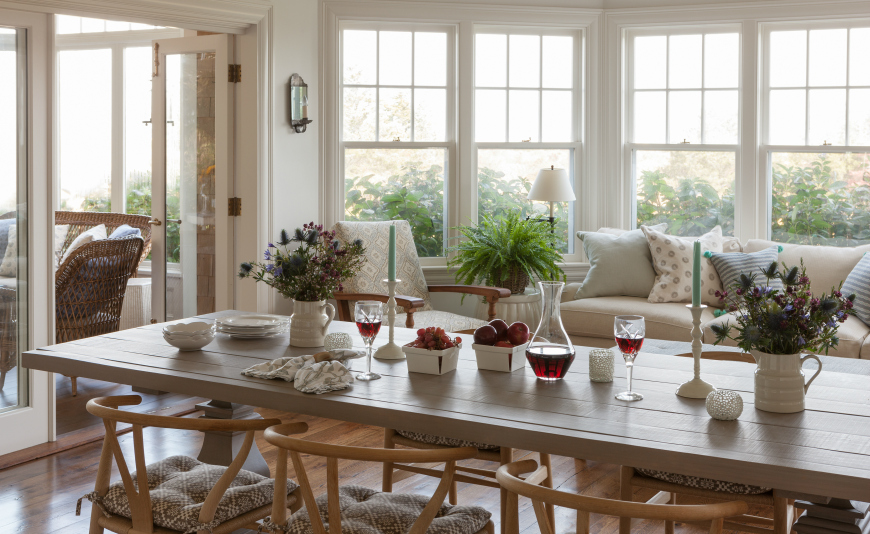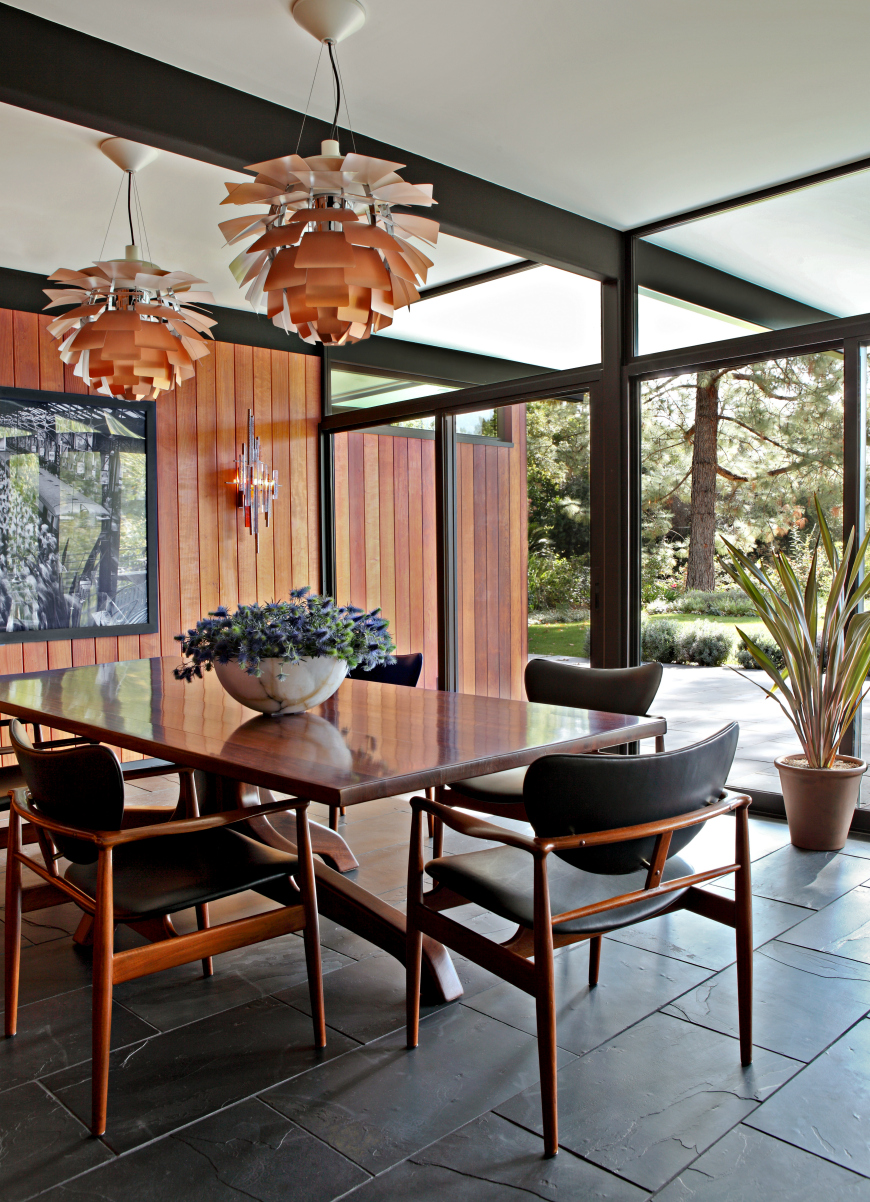The dining room is meant for just that—dining. But must the centerpiece of the room always be the table? This week’s edition of #TipTuesday explores that question, as two interior designers talk focal points and describe their favorite dining room creations.
Lili Hart
 Profession: Founder, Liliane Hart Interiors, New York City
Profession: Founder, Liliane Hart Interiors, New York City
How do you establish the focal point in a dining room? We establish the focal point of a formal dining room by placing the dining table in the center of the room. A beautiful chandelier centered over the table helps to create an intimate setting and further confirms the focal point of the room. There is also a generosity to the dining experience when the table is situated graciously in the center.
Is there ever a design situation when you don’t establish a focal point? Lately, our clients prefer a multifunctional dining room as opposed to a formal room. They prefer to have a seating area in which to gather, in addition to a place where they can dine more informally (see below).
Describe your best dining room and what made it so. Our favorite dining room is one that successfully gathers friends and family to celebrate a meal. We like to create an inviting ambience that gives the client an opportunity to relax and enjoy the company of others. This dining room has a shimmering dark grass cloth that creates a dramatic backdrop for the shimmering Baguès crystal chandelier, jewel-tone silk curtains, and antique lamps and mirror.

Jamie Bush
 Profession: Owner, Jamie Bush & Co., Los Angeles
Profession: Owner, Jamie Bush & Co., Los Angeles
How do you establish the focal point in a dining room? I often let the configuration of the architecture dictate what the focal point in a dining room will be. This may be how you enter the room, or whether a space has exposed structural elements or physical limitations. With an unremarkable space, we may highlight the furnishings to create depth and drama, or we may play down the palette and contrast of the interiors if there is already a view toward a majestic landscape beyond.
Is there ever a design situation when you don’t establish a focal point? Yes. One such example is a dining room I designed for the Beverly Hills Estate. Rather than establishing any single focal point, my intention was to express an emotional sum—a serenity achieved through a thoughtful, balanced interplay of modernist furnishings with geometric and organic forms.
There are many cases in which establishing an initial focal point can fluctuate. Focal points are dynamic and dependent on so many factors, including time of day, lighting and even occupants. For example, at the Brentwood Modern residence, the initial focal point during the day might be the vibrant hue of the pink dining chairs. However, in the dim of evening, the eye is first drawn to the warm, reflective light of the painting across the dining table.
Describe your best dining room and what made it so. One of my most successful dining rooms was for the La Cañada Mid-Century residence (pictured below). The materials within the dining space are consistent with the larger scheme of the house—a warm, organic modernism expressed through simple, repeating elements.

